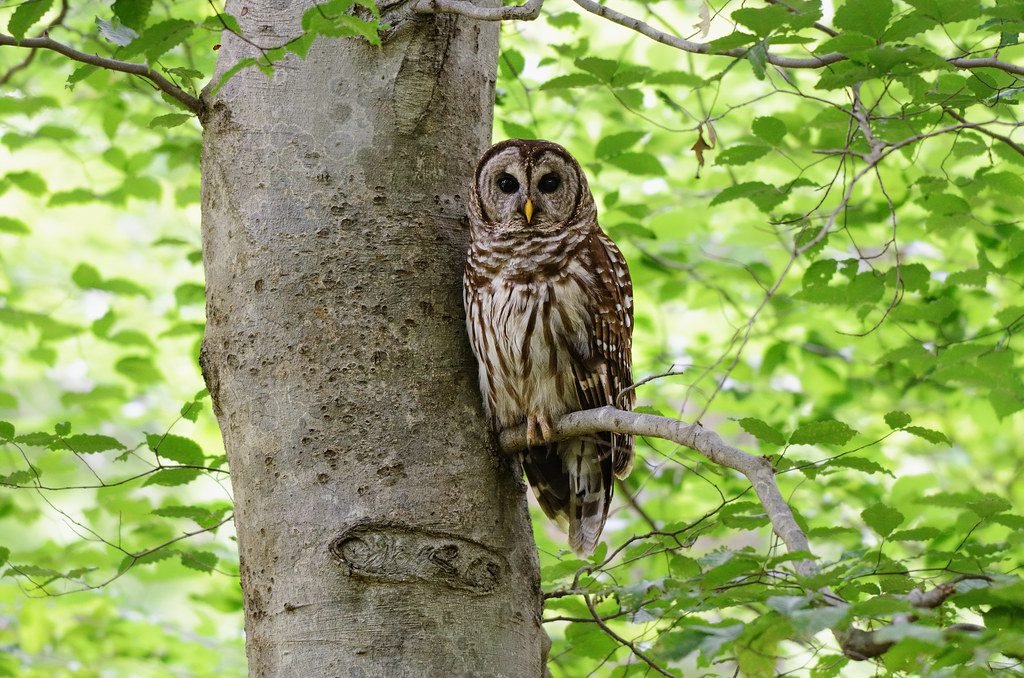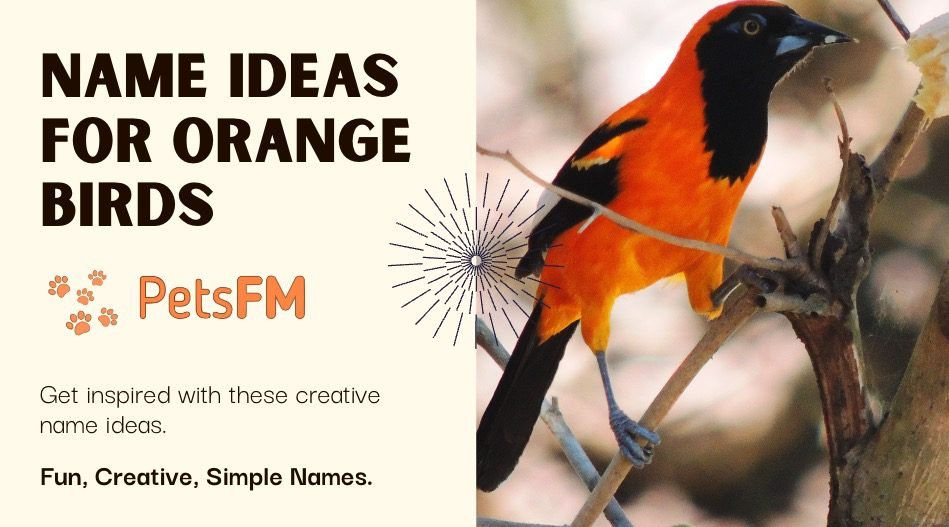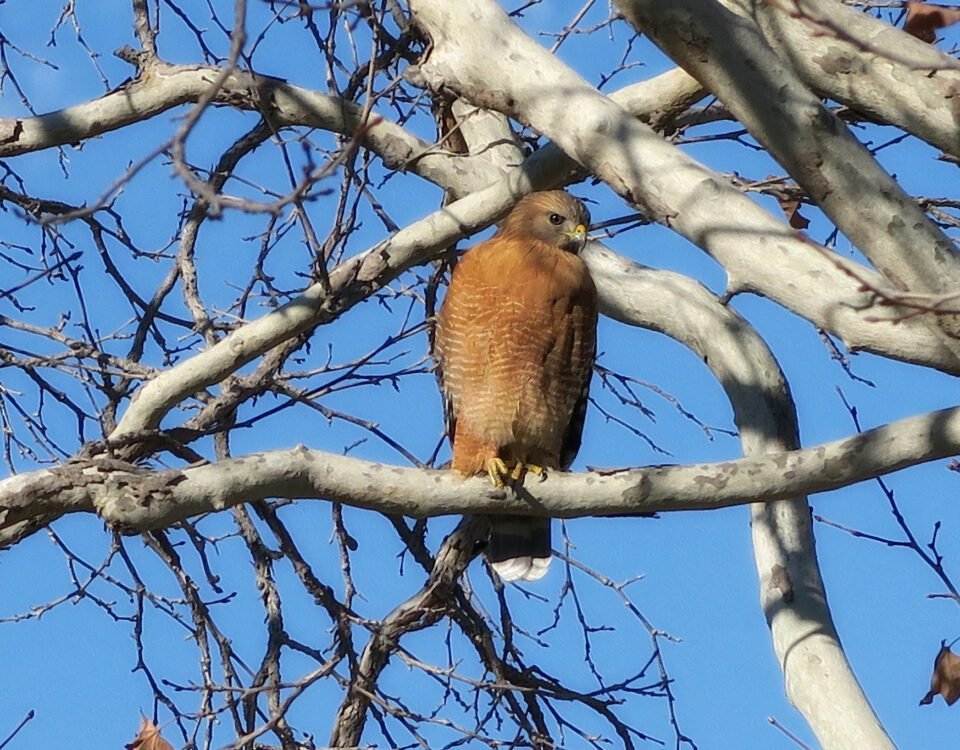


Are Birds Carnivores? A Look at Different Bird Species
October 17, 2023


100+ Bird Names In Urdu With Translation in English [UPDATED]
October 18, 2023Arabic, a language that has been a conduit of knowledge, culture, and history for millennia, flows like a river with its fluid script and profound meanings. It’s a language that crosses boundaries and links cultures like the birds we are about to explore.
Birds have often been symbolic in Arabic literature, representing various facets of life, from freedom to love. In this article, we will journey through the names of 100+ birds names in Arabic and present them in English and their written form in the Arabic script, accompanied by concise descriptions.
Related Read: 50 Bird Names In Urdu With Translation in English [UPDATED]


Bird Names
100+ Bird Names In Arabic
1. Sparrow (Asfur | عصفور)
A small and agile bird, it thrives in both urban and rural environments, renowned for its cheerful chirping.
2. Peacock (Tawoos | طاووس)
A symbol of beauty and grace, it mesmerizes with its colorful and grandiose tail display.
3. Pigeon (Hamam | حمام)
Universally recognized, it’s often seen in city squares and gardens, symbolizing peace.
4. Crow (Ghurab | غراب)
A highly adaptable bird, known for its intelligence, often seen scavenging in cities.
5. Parrot (Babbagha | ببغاء)
Parrot is a vibrant bird, renowned for its mimicry, often kept as a pet in various cultures.


Angered Bird
6. Eagle (Nasr | نسر)
Symbolizing might and freedom, this majestic raptor soars high, hunting with precision.
7. Owl (Buum | بوم)
A bird of the night, known for its hooting, often linked to wisdom and mystery.


Owl on a Tree
8. Kingfisher (Asas | عسس)
Bright and agile, it dwells near water bodies, diving skillfully to catch its fishy prey.
9. Woodpecker (Naqqaash | نقاش)
Distinctive for its tree-pecking habit, it’s known for its pointed beak and rhythmic drumming.
10. Crane (Daz | داز)
Elegant and statuesque, these birds are common in wetlands, known for their graceful dance rituals.
11. Duck (Batt | بط)
Commonly seen in lakes and ponds, they are easily recognized by their quacking and waddling gait.
12. Swan (Khoz | خوز)
Renowned for its elegance, with pristine white feathers, swans are often associated with love tales.
13. Cuckoo (Waqwaq | وقواق)
A harbinger of spring, it’s loved for its melodious call that reverberates in woodland areas.
14. Myna (Maina | مينا)
Social and vocal, this bird is often seen in populated areas, known for its diverse range of calls.
15. Dove (Yamama | يمامة)
A universal symbol of peace, they have a gentle presence and are known for their soft cooing.
16. Vulture (Nasr al-Akrab | نسر العقرب)
Scavengers by nature, they play a crucial ecological role, cleaning up by feeding on carcasses.
17. Quail (Salwa | سلوى)
Small, ground-dwelling birds, often camouflaged, they’re frequently found in grassy areas.
18. Falcon (Saqr | صقر)
Symbol of prowess in Arabic culture, these raptors are revered for their hunting skills.
19. Heron (Balashon | بلشون)
A wader with a slender neck, often seen patiently waiting by water edges, hunting for fish.
20. Penguin (Benguin | بنغوين)
Adapted for icy realms, they might be clumsy on land but are remarkably agile underwater.


Adélie Penguin
21. Flamingo (Fulamingo | فلامينغو)
Standing tall on one leg, these birds paint salt flats pink, filtering shrimp from water with specialized beaks.
22. Canary (Kanarya | كناريا)
Bright and cheerful, their melodious songs light up homes, making them popular cage birds.
23. Hummingbird (Tayr az-Zumurud | طائر الزمرد)
A spectacle of agility, their iridescent colors shimmer as they hover, sipping nectar from blossoms.
24. Ostrich (Na’aam | نعام)
Native to Africa, this gigantic bird, though flightless, runs with unmatched speed across open terrains.
25. Hawk (Habis | حبيس)
A symbol of vigilance, hawks fierce raptors possess keen eyes, soaring high before diving onto prey.


Hawks Claws
26. Magpie (Aqqa’ | عقعق)
With contrasting plumage, they are known for their intelligence and curious nature, often collecting shiny objects.
27. Raven (Ghurab Ahmar | غراب أحمر)
Larger than crows, they’re associated with mysticism, recognized by their deep croaky calls.


Ravens at Night
28. Partridge (Hajla | حجلة)
Ground dwellers of the wilderness, their plump bodies and distinct calls are a familiar countryside sound.
29. Pelican (Bakhtakh | بختخ)
A large aquatic bird, famous for its extendable throat pouch, which scoops fish from waters.
30. Finch (Fink | فينك)
Delicate and colorful, these birds enliven gardens with their sweet, melodious tunes.
31. Kite (Tayr al-Da’ira | طائر الدائرة)
Soaring gracefully in the skies, these raptors are known for their V-shaped tail and agile flight.
32. Lark (Hudhud | هدهد)
Often taking breathtaking vertical flights, its song has inspired poets and writers for generations.
33. Swift (Saree’ | سريع)
True to its name, it’s an agile flier, mostly airborne, and nests on building ledges.
34. Nightingale (Bulbul | بلبل)
Associated with passionate love poems, its enchanting song enchants many a listener on a quiet night.
35. Cockatoo (Kakatoo | كاكاتو)
Native to Australia, these birds, with their impressive crests, are vocal and known for their mimicry.
36. Albatross (Albatrus | البطرس)
Kings of the ocean skies, their immense wingspan allows them to glide over vast oceanic expanses effortlessly.
37. Starling (Zarzour | زرزور)
Noted for their stunning murmurations, these birds often gather in large, synchronized flocks.
38. Moorhen (Dajajat al-Ma’ | دجاجة الماء)
Often seen on water edges, they’re identified by their distinctive red bill and frontal shield.
39. Jackdaw (Ghuraif | غريف)
A member of the crow family, recognized by its silver head and playful nature.
40. Tern (Kamankas | كمانكس)
Seabirds known for their diving prowess, often plunging into the sea to catch fish.
41. Robin (Robeen | روبين)
Famed for its orange breast, it’s a winter symbol in the West, often featured on festive cards.
42. Seagull (Nawras | نورس)
With their distinct cries, they’re coastal birds that have adapted well to urban landscapes.
43. Toucan (Toukan | توكان)
Sporting a massive bill, this colorful bird is a tropical spectacle, predominantly found in South America.
44. Pheasant (Fazan | فازان)
Adorned with vivid plumage, these ground-dwellers are often linked with game hunting.
45. Ibis (Ibis | إبيس)
Sacred in ancient Egypt, its curved bill is ideal for probing mudflats and wetlands for invertebrates.
46. Rook (Rook | روك)
A corvid, often seen in farmlands, it’s distinguished by its featherless face and gregarious behavior.
47. Bunting (Bunting | بنتينغ)
Small and song-filled, their striking colors make them a favorite among birdwatchers.
48. Cormorant (Ghasaq | غسق)
Noted for its wing-drying stance, it dives deep to fish, surfacing with aquatic captures.
49. Curlew (Korlew | كورليو)
With its long, curved bill, this wader elegantly strides through wetlands, seeking small creatures.
50. Grouse (Gruz | غروز)
Preferring colder terrains, their mottled plumage helps camouflage them in heather and snow.
51. Chiffchaff (Safsaf | سفسف)
A small songbird, it continuously sings its name “chiff-chaff” as it darts through trees.
52. Goldfinch (Saknama | سكنما)
With its rich yellow and red markings, this lively finch thrives in gardens, warbling merrily.
53. Barn Owl (Fukah al-Hasha’ish | فوكة الحشائش)
A pale, nocturnal owl nesting in barns and ruins, its eerie screeches echo on quiet nights.
54. Hoopoe (Hudhud | هدهد)
Recognizable by its bold crest and black-and-white wings, it probes the ground with its long, curved bill.
55. Osprey (Sabil | صبيل)
A fish-eating hawk that plunges feet first to catch prey in water, its markings resemble a dark mask over the eyes.
56. Chough (Cough | كوف)
With glossy black plumage and a red curved bill and legs, this agile bird inhabits mountains and sea-cliffs.
57. Wheatear (Habari | حبري)
A passage migrant with a grey back and black mask, it bobs its tail rapidly on ground like paddling in water.
58. House Sparrow (Asfur al-Bayt | عصفور البيت)
Universally familiar in human habitats, its cheerful chirping livens courtyards and alleys.
59. Bulbul (Bulbul | بلبل)
Celebrated as the “nightingale of the East,” its rich, flute-like song features in Persian and Urdu poetry.
60. Laughing Dove (Yamama al-Dahik | يمامة الضاحك)
This small dove makes a persistent, laughing “coo-OO-oo” call, often in duets at dawn and dusk.
61. Roller (Laqab | لقب)
Its dazzling turquoise and brown make it unmistakable, often seen perched prominently on poles.
62. Wood Pigeon (Suluba | سلوبا)
A chunky, iridescent green and bronzy pigeon with white neck markings, it is found in woodlands eating seeds and fruits.
63. Avocet (Zarraq al-Bahr | زراق البحر)
This elegant black and white wader sweeps its upturned bill from side to side to catch aquatic insects in shallow water.
64. Sandgrouse (Samman | سمان)
Plump birds that congregate at waterholes in large flocks, they have feathered feet and belly furrows for soaking up water.
65. Pallid Swift (Saree’ Abyad | سريع أبيض)
With crescent wings and white belly, they breed on cliffs and nest inside caves and crevices.
66. Common Grackle (Zarzour Asia | زرزور آسيا)
An iridescent blackbird with pale yellow eyes and a long keel-shaped tail, it struts boldly on lawns hunting for worms.
67. European Bee-Eater (Malza | ملزا)
A rainbow-hued bird that breeds in colonies, excavating burrows in sandy banks, it aerially pursues insects in a dazzling display.
68. Golden Oriole (Za’faran | زعفران)
The male is a striking yellow bird with black wings and tail that produces a rich, flutey song.
69. Common Quail (Salwa | سلوى)
A plump game bird with a nasal call of “wet-my-lips,” it conceals itself in fields but often betrays its location when calling.
70. Stone-Curlew (Karawan | كروان)
With large yellow eyes and a loud, wailing cry, it is most active at night, running swiftly between bushes with outspread wings seeking insects.
71. White Stork (Laklak | لقلق)
An iconic large wading bird with black wings and red legs and bill, it often builds huge nests atop trees, mosques, and towers.
72. Pied Kingfisher (Qatifaan | قطيفان)
Its black and white plumage and crest make it conspicuous as it hovers above water before diving for fish.
73. Common Crane (Karkadan | كركدن)
These elegant grey birds congregate in large numbers and perform exuberant dances while trumpeting loudly.
74. Secretary Bird (Katta | كتا)
With an eagle-like body and crane-like legs, this unusual raptor of grasslands preys on snakes and rodents.
75. Bearded Vulture (Aqdham | عقدام)
With its bald head and habit of feeding on bones, this huge old world vulture plays a key role as nature’s recycler.
76. MacQueen’s Bustard (Talaa | طلاء)
One of the heaviest flying birds, the male has a gray neck and black crest while displaying its dramatic aerial courting routine.
77. Eurasian Spoonbill (Mujallada | مجلدة)
Named for its spatulate bill, it swings this bill side to side in water as it wades, snapping up fish and insects.
78. Hooded Crow (Ghurab al-Rais | غراب الرئيس)
Widespread in the Middle East, this all-black crow has a distinctive gray nape giving it a hooded appearance.
79. Pied Kingfisher (Sindbadh | سندباذ)
A compact black and white kingfisher, it makes a shrill, descending call as it dives vertically into water to catch fish.
80. Rock Partridge (Saj | ساج)
Camouflaged to blend into its rocky habitat, this rotund partridge has a red bill and legs with black and white streaking on its body.
81. White-tailed Lapwing (Tatanawwa’ | طاطنواء)
With rounded wings and dangling yellow legs, its acrobatic tumbling display flight is a distinctive sight over deserts.
82. Eurasian Collared Dove (Yamama Kal’ad | يمامة كلاد)
Often seen in pairs, its rhythmic cooing accompanies the rhythmic swinging of its tail.
83. African Palm Swift (Saree’ al-Nakheel | سريع النخيل)
As the name suggests, this small cigar-shaped swift is seen screeching around palm trees, and uses palm fibers to build nests.
84. Yellow Wagtail (Dafda’ | ضفضاء)
A brightly colored passerine, it aggressively bob-bob-bobs its tail up and down, especially in the spring breeding season.
85. Common Swift (Saree’ | سريع)
Crescent-shaped, with scythe-like wings, it’s built for speed and agility in flight, and roams the skies endlessly chasing insect prey.
86. White-breasted Kingfisher (Qatifaan Sadr Abiadh | قطيفان صدر أبيض)
With gleaming bluish and turquoise hues above and a white underside, this beautiful kingfisher inhabits watercourses within forests.
87. Eurasian Skylark (Fuhaid | فهيد)
It sings cheerfully in hovering, fluttering display flights, pouring its heart out while ascending high into the sky.
88. Common Wood Pigeon (Yamama al-Ghaab | يمامة الغاب)
A plump grayish pigeon with white neck patches, red eyerings, and a loud cooing call that carries far across woodlands.
89. European Bee-eater (Malza | ملزا)
With its striking golden plumage, long tail-streamers, and aerial agility, this insect-hunter brightens meadows and fields during summer.
90. Little Grebe (Ghareed | غريد)
A tiny waterbird, it disappears from sight and reappears elsewhere like a conjuring trick, earning it the name “dabchick.”
91. Southern Masked Weaver (Habry | حبري)
The male has a striking yellow nape and black facial mask, and builds an intricately woven nest with a long entrance tube hanging over water.
92. Eurasian Crag Martin (Rishad | رشاد)
It builds elegant flask-shaped nests on the sides of cliffs and gorges, and has a twittering call and greyish-brown coloration.
93. Greater Hoopoe Lark (Bu sbou’i | بوسبوعي)
This large desert lark has a thin, pointed bill and bold black, white, and cinnamon plumage with a prominent crest.
94. Cinereous Bunting (Zarzour Abyad | زرزور أبيض)
A streaky brown bunting with bold pale supercilium and moustachial stripes, commonly found singing from poles and overhead wires.
95. Shining Sunbird (Lais | ليس)
The male has an iridescent purple breast band and other vivid colors, pollinating flowers as it darts swiftly between blossoms.
96. Red-billed Chough (Kaukab Murrah | كوكب مرة)
With glossy blue-black plumage set off by curved red bill and legs, this aerobatic bird inhabits mountain cliffs and coastal regions.
97. Purple Sunbird (Uffan | أفان)
Colorful and energetic, the male gleams with iridescent purple and green plumage as it feeds on nectar, darting between flowers.
98. Yellow-vented Bulbul (Bulbul al-Kurr | بلبل الكر)
A globally introduced songbird with conspicuous yellow undertail coverts and vent, it is lively, vocal, and adapted to urban areas.
99. Spur-winged Lapwing (Dhidi’ | ضديع)
With a black crown, face mask, and bib contrasting white cheeks, its wings produce a distinct rattling sound in flight.
100. Common Kingfisher (Sindbad | سندباد)
With its long bill and vivid plumage, this petite fisher hovers briefly before diving into water to snatch small fish.


Name of Birds in Arabic
How to Say ‘Bird’ in Arabic?
In Arabic, the word for ‘bird’ is “Tayr” (طائر).
The term “Tayr” encompasses the diverse avian species that have played significant roles in the culture, literature, and history of the Arabic-speaking world, symbolizing freedom, beauty, and wisdom.
Two Arabic Proverbs with the Word ‘Bird’
- “The bird does not defecate where it perches.” (الطائر لا يفعل برازه حيث يقع) – This proverb emphasizes the idea that one should be mindful of their actions and not bring trouble or disgrace to a place or situation where they are welcomed or respected.
- “In the company of a bird, you will learn to fly.” (في رفقة الطائر تعلم الطيران) – This proverb suggests that being around experienced or skilled individuals can help you acquire their knowledge or abilities, much like a fledgling bird learning to fly from its companions.
Birds of Prey in Arabic Lore
- These birds like eagles, hawks, and falcons are admired for strength and valor in Arabic culture. Their Arabic names reflect majesty and power.
Melodious Songbirds of Arabic Poetry
- Birds like nightingales, bulbuls, and larks are celebrated for their sweet songs and symbolize love in Arabic poetry. Their names evoke musicality.
Arabic Idioms Featuring Birds
- Arabic has many idioms and expressions using bird names that provide cultural insights. Exploring these linguistic gems can be fascinating.
Birds of the Deserts and Coasts
- Unique birds found in Arabia’s deserts and coasts like Arabian oryx, crab plover, and Socotra cormorant can highlight regional avifauna.
Mystical Birds of Arabic Folklore
- Arabic folk tales feature mythical birds like Anqa, Simurgh, and Roc that can make for captivating reading.
Bird Symbolism in Ancient Arabic Civilizations
- Birds were integral in ancient civilizations on the Arabian peninsula as symbols, messengers, and more. Tracing their significance is insightful.
Arabic Bird Names Lost in Translation
- Some Arabic bird names like “Hudhud” for lark evocatively mimic bird calls. These onomatopoeic names are hard to translate.
Conclusion
With this, we have journeyed through 50 remarkable birds, experiencing them through the profound depth and beauty of the Arabic language. Birds, much like languages, are connectors of cultures and civilizations, and it’s our shared responsibility to cherish and preserve them for future generations.
Next Read: 80+ Bird Names In Hindi With Translation in English [UPDATED]




